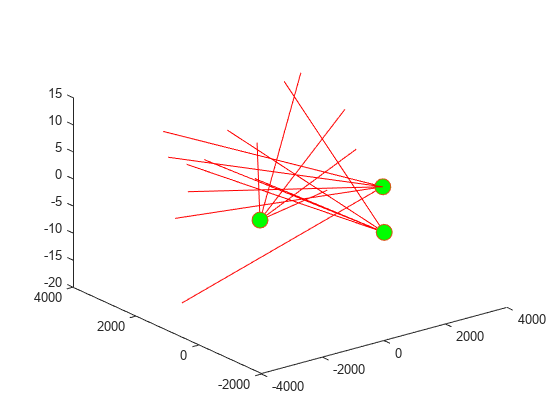staticDetectionFuser
Static fusion of synchronous sensor detections
Description
staticDetectionFuser
System object™ creates a static detection fuser object to fuse angle-only sensor
detections.
To obtain the fuser:
Create the
staticDetectionFuserobject and set its properties.Call the object with arguments, as if it were a function.
To learn more about how System objects work, see What Are System Objects?
Creation
Description
fuser = staticDetectionFuser()
fuser = staticDetectionFuser(Name,Value)fuser =
staticDetectionFuser('FalseAlarmRate',1e-6,'MaxNumSensors',12) creates a fuser
that has a maximum of 12 sensors and a false alarm rate of 1e-6.
Enclose each property name in quotes.
Properties
Usage
Description
compositeDets = fuser(dets)compositeDets, of input detections,
dets.
[
also returns analysis information, compositeDets,analysisInfo] = fuser(dets)analysisInfo.
Input Arguments
Output Arguments
Object Functions
To use an object function, specify the
System object as the first input argument. For
example, to release system resources of a System object named obj, use
this syntax:
release(obj)
Examples
Algorithms
References
[1] Bar-Shalom, Yaakov, Peter K. Willett, and Xin Tian. Tracking and data fusion. Storrs, CT, USA:: YBS publishing, 2011.
Extended Capabilities
Version History
Introduced in R2018b

![Figure contains an axes object. The axes object with title Angle-only Detection Fusion, xlabel x [m], ylabel y [m] contains 3 objects of type line. One or more of the lines displays its values using only markers These objects represent Angle-only Detections, Sensor Positions, Fused Target Measurements.](../../examples/fusion/win64/FuseAngleOnlyDetectionsTitleExample_02.png)